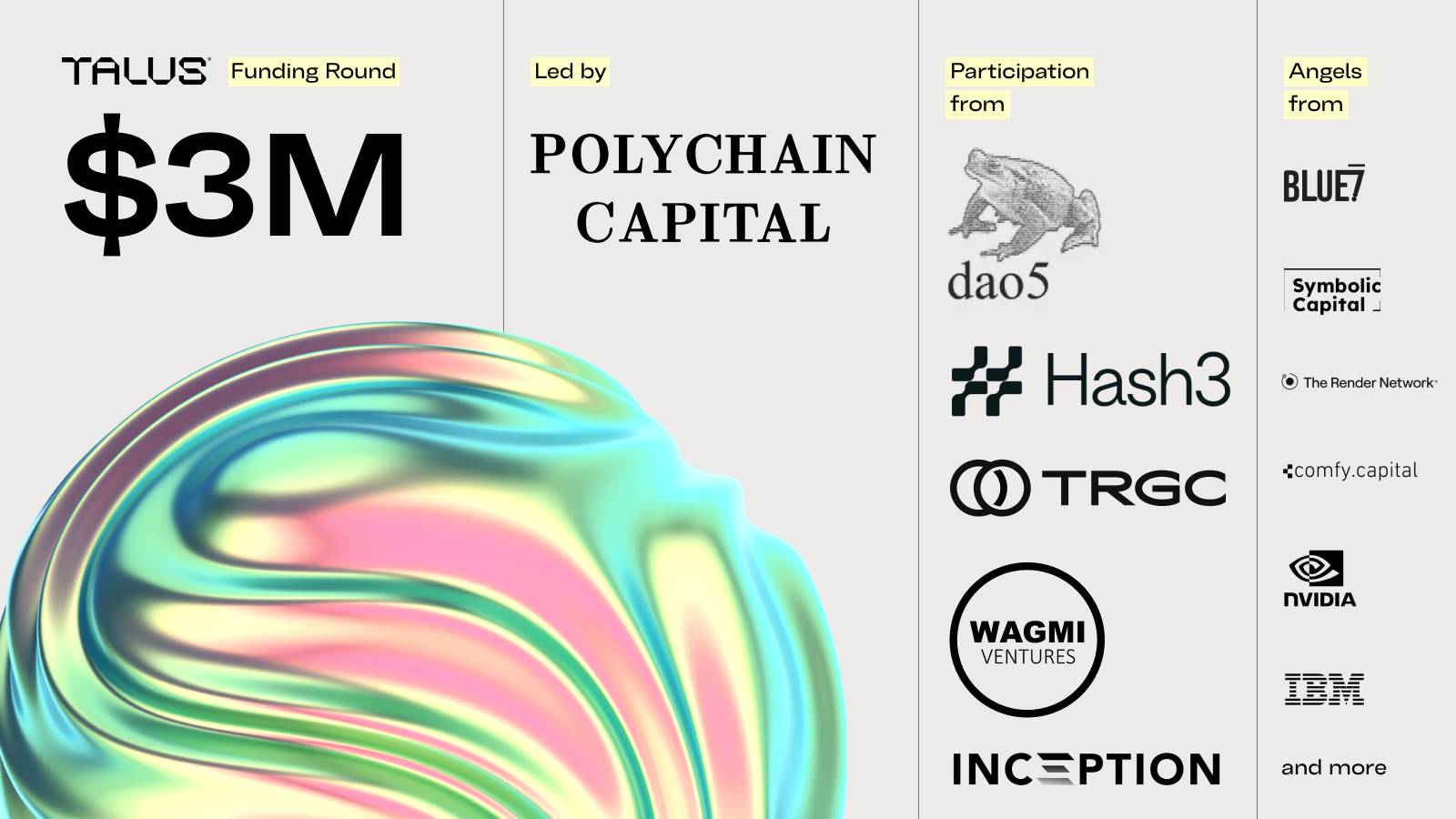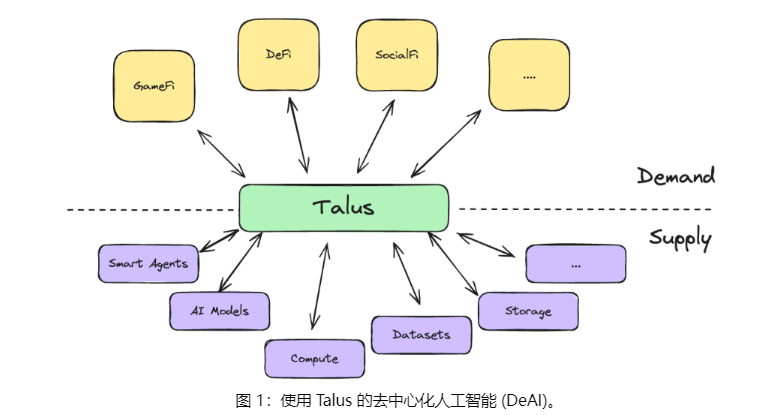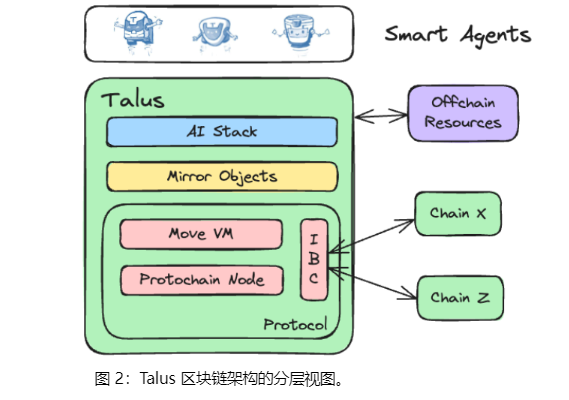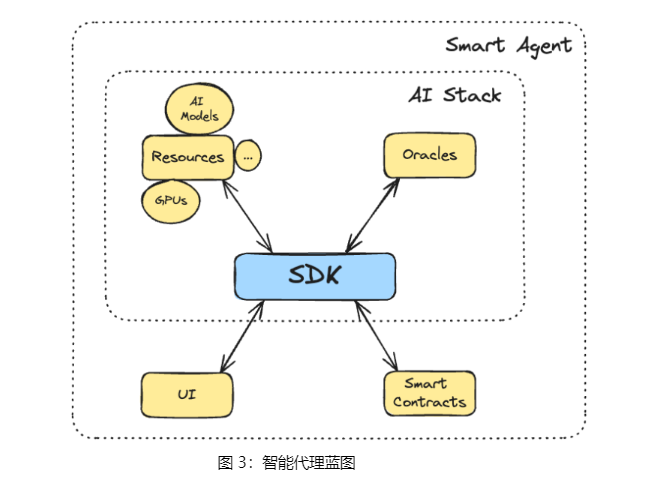Talus How to Choose the Right Timing and Catalyst to Launch Its Network and Incentivize Users, or Will Become the Key to the Success or Failure of Its Listing Strategy.
Author: Deep Tide TechFlow
Every AI project has a difficult-to-understand white paper.
Although the market is increasingly filled with discussions likening AI tokens to memes, quickly understanding the narrative of a hot AI project through the white paper is still crucial for judging the value of its tokens.
In February of this year, the new AI project Talus Network completed its first round of $3 million in financing, led by Polychain Capital, with dao5, Hash3, TRGC, WAGMI Ventures, and Inception Capital participating.

Today, Talus also released its white paper, providing further explanations of its business scope and token economics.
Here is a summary of the important content of the white paper to help you quickly understand Talus Network.
L1 for AI Agents
Talus is a platform designed to integrate AI with blockchain technology. It does so by providing a high-throughput L1 blockchain (driven by the Move programming language) and enhancing the local AI stack, enabling intelligent agents to live, interact, and transact in the Web3 ecosystem.
You can think of Talus as a decentralized intelligent AI agent center, addressing key issues such as data privacy, security, accessibility, and promoting transparent and efficient interactions in the AI ecosystem.
AI narratives are certainly hot, but is it logically consistent to specifically design an L1 for AI agents?
Talus provides the answer:
In terms of openness, the openness and composability of blockchain applications make it easier to view, track, and trust the behavior of artificial intelligence agents; users can more easily find the most suitable artificial intelligence agents based on verifiable past performance records.
In terms of autonomy, blockchain infrastructure enables intelligent agents to interact autonomously, allowing them to make outcome decisions.

Specifically, Talus actually allows the local design and deployment of decentralized on-chain intelligent agents, seamlessly and trustlessly utilizing on-chain and off-chain resources and services.
Combination of Existing Components and New Features
So, how does Talus achieve this?
The answer lies in the combination of existing technology and new features. These components work together to provide a decentralized, efficient, and secure intelligent agent platform. The key components, from the bottom to the application layer, can be summarized as follows:
1.Protochain Node:
The core of Talus is a proof-of-stake (PoS) blockchain node based on Cosmos SDK and CometBFT, called Protochain Node. This choice provides flexibility, robustness, and high performance.
This technological architecture ensures the security and scalability of the Talus blockchain, providing a solid foundation for the operation of intelligent agents.
2.Sui Move and MoveVM:
Talus adopts Sui Move as the smart contract language. The Move language is known for its high performance, security, and programming properties.
By using Move, Talus can enhance the security of on-chain logic, simplify the creation, transfer, and management of digital assets, and achieve more efficient smart contract execution.
3.IBC (Inter-Blockchain Communication Protocol):
By adopting the Inter-Blockchain Communication Protocol (IBC), Talus achieves seamless interoperability between different blockchains, enabling intelligent agents to interact across multiple blockchains and utilize data or assets.
IBC provides atomicity and scalability for cross-chain transactions, ensuring the reliability and consistency of operations.
4.Mirror Objects:
Talus introduces the concept of mirror objects to represent and verify off-chain resources, such as models, data, and computational objects, on-chain.
Mirror objects bridge the high computational demands of AI processes and the blockchain environment, ensuring the uniqueness and tradability of resources.
5.AI Stack:
Talus provides an SDK and integrated components to support the development of intelligent agents and their interaction with off-chain resources.
This AI stack also includes integration with Oracles, ensuring that intelligent agents can make decisions and react based on off-chain data.
6.Onchain Smart Agents:
At its core, Talus provides an intelligent agent economic system, where these agents can operate autonomously, make decisions, execute transactions, and interact with on-chain and off-chain resources.
Intelligent agents possess autonomy, sociality, reactivity, and proactivity. Autonomy allows them to operate without human intervention, sociality enables interaction with other agents and humans, reactivity allows them to perceive environmental changes and respond promptly, and proactivity enables them to take action based on goals, predictions, or expected future states.

The following image shows the architecture blueprint of Talus intelligent agents, explaining how the various components work together.
SDK: It serves as a bridge between intelligent agents and other components (such as resources, Oracles, UI, and smart contracts). It provides the necessary libraries and tools to help developers build and integrate intelligent agents. The SDK simplifies the development process and provides a unified interface, enabling intelligent agents to efficiently utilize the platform's resources and services.
Resources: These include AI models, GPUs, and other computational resources. These resources interact with intelligent agents through the SDK, providing the necessary computing power and data support. AI models can be pre-trained models that intelligent agents can use for inference and decision-making.
Oracles: They provide external data to intelligent agents, enabling them to make decisions based on the latest real-world information.
UI Components: They allow users to interact with intelligent agents. Through a user-friendly interface, users can configure, manage, and monitor the operational status of intelligent agents.
Through this architecture, Talus achieves the autonomy and decentralization of intelligent agents, ensuring efficient resource utilization and system transparency, and driving the integration of AI and blockchain technology.

Token Economics and Applications
The core of the Talus ecosystem is the TAI token, which serves multiple functions on the platform. The following are the key roles of the TAI token in the Talus ecosystem:
Medium of Exchange: All intelligent agents use TAI tokens for usage, resource purchases, and transactions. This ensures that all economic activities within the ecosystem revolve around TAI tokens, increasing the circulation and demand for the tokens.
Resource Purchase: Resource providers can earn TAI tokens by providing computing power, data, or models. In turn, developers and users can use TAI tokens to acquire these resources, driving the development of the ecosystem.
Network Security: TAI token holders can participate in the Proof of Stake (PoS) mechanism of the network, maintaining network security and consensus by staking tokens and receiving corresponding rewards.
Governance: Users holding TAI tokens can participate in platform governance, proposing and voting on decisions for platform improvements and development direction, ensuring community democracy and transparency.
However, the white paper has not yet disclosed the token economic model for TAI. The author speculates that the details of the token are still being designed and await further information to be supplemented.
In terms of the application scenarios for AI intelligent agents, Talus provides the following functionalities that can be achieved in the Web3 domain:
Enhanced User Experience: Intelligent wallets and analytics tools that monitor and analyze transaction and asset status in real-time, providing users with personalized blockchain browsing and project management experiences.
DeFi: Optimized liquidity management, automated on-chain portfolio tracking and management, and enhanced efficiency and effectiveness of DeFi applications through intelligent exchange aggregation and path optimization.
DAOs: Support for automated financial and asset management, AI-based governance, and decision support.
Internet of Things (IoT): Assistance in managing IoT device ecosystems, intelligent device maintenance scheduling, ensuring the identity and security of IoT devices, and optimizing logistics and supply chain management.
Gaming / SocialFi: Personalized on-chain story generation, virtual economy management, intelligent NPCs, and social network interactions between agents, bringing new experiences and interaction methods to gaming and social applications.
AI and Data Ecosystems: Support for collaboration between model developers and data providers, promoting the development and monetization of specialized AI models, efficient utilization and monetization of data and computational resources, and supporting crowdfunding models for research and development.
Based on the content provided in the current white paper, Talus has only clearly defined the project's business scope and use cases. There is not much presentation of more technical details, economic models, and actual effects, which is in line with the release of its "Litepaper" version.
However, it is an undeniable fact that the AI race is intense, and there is a constant emergence of projects with strong performance in the AI agent category. Therefore, how Talus chooses the right timing and catalyst to launch its network and incentivize users may become the key to the success or failure of its listing strategy.
After all, in the current market, attracting more users to participate and impressing the community with solid products and technology is the key measure for high-profile AI projects to capture value, especially in the situation of high FDV and low circulation tokens staked by VC investments.
免责声明:本文章仅代表作者个人观点,不代表本平台的立场和观点。本文章仅供信息分享,不构成对任何人的任何投资建议。用户与作者之间的任何争议,与本平台无关。如网页中刊载的文章或图片涉及侵权,请提供相关的权利证明和身份证明发送邮件到support@aicoin.com,本平台相关工作人员将会进行核查。




